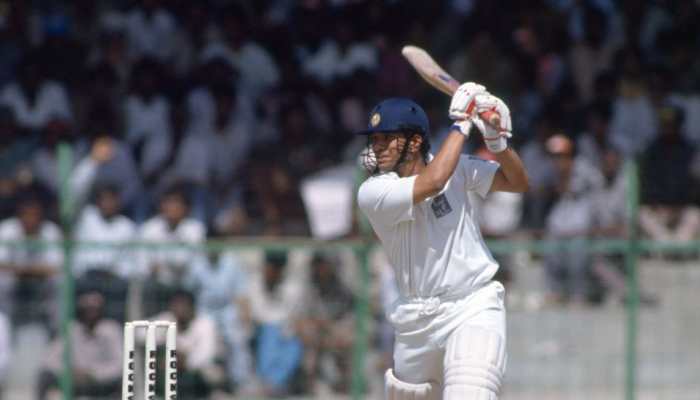We’re great admirers of ISRO, says Omran Sharaf, Project Director of Emirates Mars Mission
The Emirates Mars Mission is United Arab Emirates' first mission to Mars and First Arab Interplanetary mission. It is designed to orbit Mars and study the dynamics in the Martian atmosphere on a global scale, and on both diurnal and seasonal timescales.
- The Project Director of Emirates Mars Mission lauded India's Indian Space Research Organisation
- Omran Sharaf expressed hope for more collaborations in the future
- "We didn’t get to work together on the EMM, but we’re always open to new international collaborations and ideas," he said
Trending Photos
) Zee News Image
Zee News Image The Project Director of Emirates Mars Mission (EMM), Omran Sharaf, has lauded India's Indian Space Research Organisation (ISRO) and expressed hope for more collaborations in the future. "We’re great admirers of ISRO, and as you’ll know we worked together on the launch of the Mohammed Bin Rashid Space Centre’s Nayif-1 satellite. We didn’t get to work together on the Emirates Mars Mission, but we’re always open to new international collaborations and ideas," said Omran Sharaf while responding to questions of Zee Media correspondent Sidhant Sibal.
The Emirates Mars Mission is United Arab Emirates' first mission to Mars and First Arab Interplanetary mission. EMM is designed to orbit Mars and study the dynamics in the Martian atmosphere on a global scale, and on both diurnal and seasonal timescales.
Using three scientific instruments onboard the spacecraft, EMM will provide a set of measurements fundamental to an improved understanding of circulation and weather in the Martian lower and middle atmosphere. Recently EMM has finalized a science data analysis collaboration with NASA’s MAVEN Mars Mission. Asked about that, Sharaf explained, "EMM has focused on Mars’ lower atmosphere, while MAVEN focused on the upper atmosphere. Now we can make the link between the two."
Q: Can you tell us how important is the Emirates Mars Mission to the UAE?
A: EMM is of critical importance to the Emirates as the nation embarks on its second 50 years since its foundation in 1971. The Emirates Mars Mission is part of a long-term integrated effort to create economic opportunity around leadership in space sciences, research, and exploration. The mission’s probe was named Mars Hope as a symbol of hope for all young Arabs. EMM is driving innovation in the UAE, building educational capabilities and new opportunities for the nation’s young people to build careers in the fast-growing global space sector, and driving excellence in engineering, scientific research, and innovation.
"This mission represents a future vision not only for the Emirates but the entire Arab world. Both our country and the region as a whole have young populations, and the goal of the mission is to inspire and create opportunities for those future generations in the fields of science and technology. Indeed, the region once led the world in science and human understanding, and our hope is that we can do so once again. It is vital that we make this transition to a knowledge-based economy, where The Emirates can be a global hub for technological innovation, attracting talented people from around the world to work together as we prepare for life after oil," he added.
Q: How will your collaboration with NASA help, specifically regarding space research?
A: Our agreement to share information and collaborate with the MAVEN mission opens up access to previous observations made by MAVEN’s team, which are complementary to EMM’s data gathering – both missions answer goals set by the Mars Exploration Program Analysis Group, which basically posits three questions – what do we know about Mars, what don’t we know and what do we want to know? This complementarity means that EMM has the potential to answer questions thrown up by MAVEN’s investigations but also that MAVEN’s data could contextualize the observations we are now able to make with EMM. Critically, EMM has focused on Mars’ lower atmosphere, while MAVEN focused on the upper atmosphere. Now we can make the link between the two.
Q: Emirates Mars Mission’s Hope Probe entered the orbit of Mars on the 9th of February, 2021. What has it been able to discover so far? Has it garnered any new information on Mars?
B: We were very lucky to be able to make early observations of Mars’ discrete auroras which gave us unprecedented detail and scope of observation. Those exciting early observations led us to increase our focus on these auroras by using spare bandwidth and resources freed up because Hope’s journey to Mars was so efficient and on track – a real testament to the effectiveness of the platform we developed. Following those observations, we were also able to gather new observations of unusual concentrations of both oxygen and carbon monoxide which are now driving a new line of research.
Our observations of dust storms, because of Hope’s orbit and almost 100% planetary coverage, have also opened up new areas of investigation and granularity that challenge our models and preconceptions. We now have a totally new class of discrete aurora we are investigating, which derives from the observations we have been making from those early discoveries.
So far, EMM has exceeded our wildest expectations in regard to the observations and new discoveries we have been able to make. It promises a great deal more moving forward, which is extremely exciting.
Q: How is the collaboration with India going? Did India have a role in your mars mission?
B: We’re great admirers of ISRO, and as you’ll know we worked together on the launch of the Mohammed Bin Rashid Space Centre’s Nayif-1 satellite. We didn’t get to work together on the Emirates Mars Mission, but we’re always open to new international collaborations and ideas. For sure, Indian scientists, researchers, and enthusiasts have access to EMM’s science data through our Science Data Centre, which shares all of our data sets from Hope’s three instruments globally without embargo. It would be very exciting to find Indian researchers using that open access data set to forge ahead with new research and discoveries.
Stay informed on all the latest news, real-time breaking news updates, and follow all the important headlines in india news and world News on Zee News.
Live Tv







)
)
)
)
)
)
)
)
)
)
